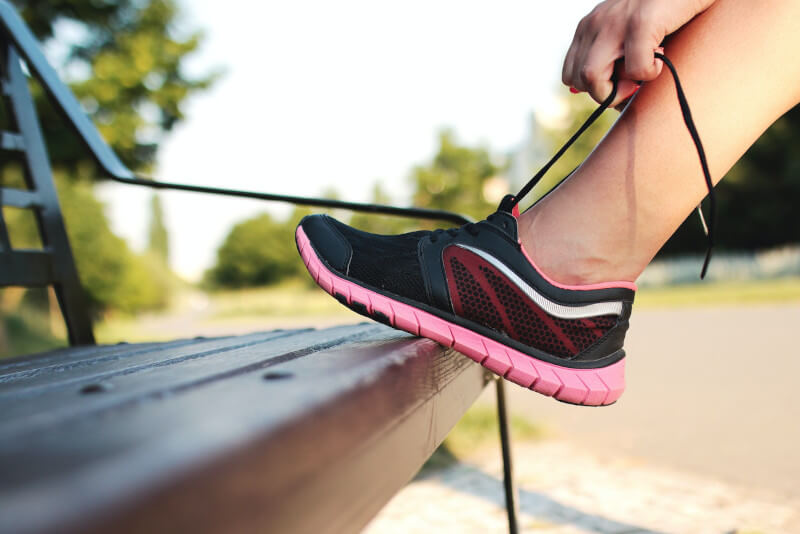
Let’s Confront It
the recovery period that several runners find themselves in right now – or any time after a goal race such as a half marathon or marathon – has a bad reputation. This is because many people associate it with a period of rest and inactivity. When you’ve finished the main training season, it’s easy to forget about what’s left over a few days later because it’s simple to overlook. This is how it’s frequently regarded.
The majority of this can be attributed to the widespread myths that athletes tell themselves. Let’s disprove the four most common ones that come up during the course of the year.
I Won’t Be Capable of Running at All for the Next Few Weeks
If there are no other competitions on the horizon, you can definitely commemorate your most recent accomplishment and take your foot off the pedal; however, this does not mean that you are obligated to spend weeks sitting on the sofa and watching Netflix. In actual fact, lounging around all day can lead to a reduction of athletic ability and even the feared runner’s blues; therefore, maintaining a workout regimen will assist you in recovering from your injury. Your race range, your current health and fitness level, how hard you tried to push yourself, and other factors all play a role in the development of a personalized post-race recovery strategy.

Using this method, you can gradually reintroduce running into your routine while simultaneously running with a flexible and open plan and allowing your body to serve as your guide. For an endurance race such as a half marathon or longer, for instance, you should block off at minimum three to four weeks in your schedule and tag each week as Recovery Week 1, Recovery Week 2, Recovery Week 3, and so on. When the muscle pain from the race has subsided, this becomes an especially important consideration. A little bit later on, we’ll talk about how fast you should run each week and how much effort you should put into it.
Who Needs to Get Better? I Take It Easy
When we hear this, it reminds us of someone telling us that we aren’t required to sleep during the night because we sit all day at work. It is equally crucial for those who race less regularly to invest in a substantial 4 to 6 recovery period as it is for those who run a large number of events or do various races in a weekend.
There is Simply No Way That I Will Be Able to Run With Any Intensity
This may be especially true if you exerted a lot of effort during the race, if you’ve been having difficulties with muscle spasms, pains, or exhaustion, or if you just forced your mileage to areas it has never been previously. However, if your body is feeling energetic and you have the motivation to push yourself further, you can increase your running intensity during the later stages of a recovery plan.
Let’s Go Back and Look at the Recovery Period of That Endurance Race
In the first week, you should give your body a “true rest,” which typically entails not engaging in any form of training for the first day or two of the week. After that, you should engage in low-impact activities like cycling and body movement exercises, and then finish the week with some easy running if your body isn’t in pain.

In the second week of your running program, you should try to run shorter distances with less effort while increasing the frequency of your workouts. In the third week, your running time should remain unchanged or slightly increase, but you should take it easy the entire time. After the fourth week, you can gradually incorporate more strenuous running into your routine. At some point during the week, either go for interval training or tempo run outside or sign up for a HIIT class at your local gym.
We Compare the Play Phase With the Recovery Period
The advantages far outweigh the drawbacks, and during this phase of your training, when you are not constrained by a progressive regimen, you have the freedom to go out and work a little bit harder. In addition to this, it injects a measure of freedom into your routine, which in turn can motivate you to experiment with new activities.
I Anticipate That I Will Put on a Lot of Weight and Completely Destroy Any Fitness I Have Built Up
Athletes must maintain a constant state of physical and mental fitness in order to achieve their goals. The recovery phase helps you get your daily life, your body, and your thoughts back into a state of equilibrium. It is a reset that grants the opportunity for healing to take place so that you can push again in the long term. If they do not have it, athletes run the risk of suffering from mental exhaustion, an absence of motivation, tiredness, and a decline in their overall performance.
“The hunger” that often comes with intense training settles, which in turn allows your metabolic activity to settle down and reprogram to a regular fueling cycle. As a result, numerous athletes are genuinely able to maintain their current weight or lose weight during the offseason.
When you are past the spiking stages of your training season, the cravings typically cease, which lessens the likelihood that you will fall back into the common habit of eating brownies during that time. Resetting your fueling schedule with the help of an app that keeps track of it can be of great assistance. You will be able to adjust your meals and, for some people, find their ideal weight after practicing intuitive eating for a few weeks.
Take This Into Consideration
If you are still on the fence about entering the recovery phase. It is common practice for elite athletes to take an entire month off from running in order to facilitate the most effective recovery possible. Their entire existence is predicated on achieving victory. Train like a pro and make sure to take breaks for your body regardless of wether your goal is to complete 12 half distance races in one year or to earn a personal best time in a race.



